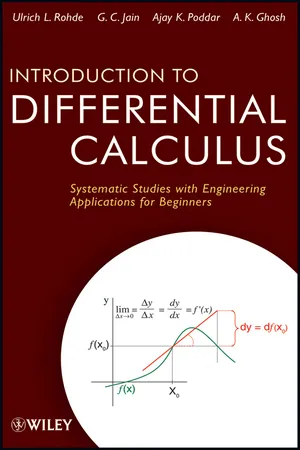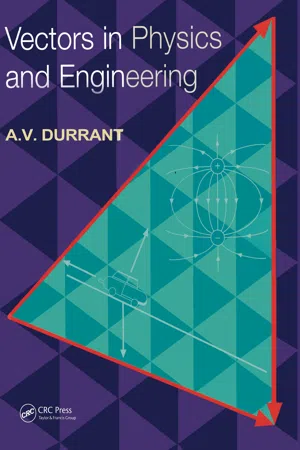Physics
Average Velocity and Instantaneous Velocity
Average velocity is the total displacement of an object divided by the total time taken. It gives an overall picture of an object's motion. Instantaneous velocity, on the other hand, is the velocity of an object at a specific instant in time. It is determined by calculating the slope of the tangent to the position-time graph at that instant.
Written by Perlego with AI-assistance
Related key terms
6 Key excerpts on "Average Velocity and Instantaneous Velocity"
- Paul Grimshaw, Neil Fowler, Adrian Lees, Adrian Burden(Authors)
- 2007(Publication Date)
- Routledge(Publisher)
t, the average velocity between instant 1 and instant 2 may be determined from the equation:The average velocity is also called the rate of change of displacement. Remember, velocity is a vector quantity and therefore this represents the average velocity in a specific direction; if the direction is not specified or unimportant to the situation then the above equation is preferably termed the average speed.Fig. A5.1agraphically represents the displacement of a moving object plotted against time. From this it can be seen that the equation for the average velocity between s1 and s2 is in fact the same equation that gives the slope or gradient of the line between the points marked A and B, which correspond to the times t1 and t2 respectively. Similarly, the gradient of the line between points C and D must be the average velocity of the object over the smaller time interval δt. (Note: δ is the Greek lower case letter delta and is often used in mechanics to indicate a small change in some quantity, in this case a small change in time.)Fig. A5.1. An illustration of how the gradient between two points becomes the tangent to the line as the time interval between the two points reduces to zeroInstantaneous values
Knowing the average velocity of a moving object is only of limited value; usually of greater interest is the velocity at a particular point in time and to know this it is necessary to know the object’s instantaneous velocity. The instantaneous velocity is the velocity that exists at any point in time and is given by the point on the curve inFig. A5.1aat that time. As the change in time becomes smaller and smaller, the average velocity becomes the instantaneous velocity as the gradient of line C–D becomes the tangent to the curve at that instant in time (Fig. A5.1b, line E–F). Mathematically this is represented as the instantaneous velocity (v- eBook - ePub
Doing Physics with Scientific Notebook
A Problem Solving Approach
- Joseph Gallant(Author)
- 2012(Publication Date)
- Wiley(Publisher)
The average speed is the total distance traveled divided by the elapsed time.There is an important difference between the average speed and average velocity. The average speed is always positive and conveys no information about direction. The average velocity contains information about direction and can be positive, negative or zero. It tells us how fast the object moved and the direction of the motion.The instantaneous velocity tells us how fast the object is moving right now, at this instant. As the time interval in Eq. (2.2) gets smaller, the average velocity gives a better approximation to the instantaneous velocity. The instantaneous velocity is the average velocity calculated over a vanishingly small time interval. Of course, “vanishingly small” brings us dangerously close to calculus. However, as you will soon see, we can derive equations for the instantaneous velocity without using calculus.Acceleration
As an object moves, its velocity can change. The object’s average acceleration is the rate of change in its velocity(2.4)where Δv = v - v0 is the change in velocity and Δt is the finite time interval. For constant acceleration, the average and instantaneous acceleration are always the same. The SI unit for acceleration is the meter per second per second (m/ s2 ). The American unit for acceleration is the foot per second per second (ft/ s2 ), although the mile per hour per second (mi/ h/ s) is also used.Example 2.3A test driveWhat is the constant acceleration of a car that goes from zero to sixty in 4 seconds?Solution.The phrase “zero to sixty” refers to miles per hour, so you need to convert 60.0 miles per hour to meters per second. The following expression converts the final velocity with the Solve Method .You can use Eq. (2.4) and Evaluate - eBook - ePub
- Richard A. Silverman(Author)
- 2013(Publication Date)
- Dover Publications(Publisher)
3.12. Average velocitya. By the average velocity of the particle with equation of motion (1) , over the interval from t to t + Δt , we mean the function of two variablesIt is meaningless to ask for the average velocity at a given instant t without specifying the averaging time .b. To be useful, an average velocity should not be too “crude,” that is, Δt should not be too large. Consider, for example, a particle whose equation of motion is described (in part) by the tableThe particle is actually moving back and forth rather dramatically, but you would never know it calculating the “two-second averages”which seems to suggest that the particle is moving slowly and steadily in the positive direction with a velocity of 1 foot per second! Choosing a shorter averaging time Δt = 1, we getv av (0, 1) = −10, v av (1, 1) = 12, v av (2, 1) = −10, v av (3, 1) = 12.This gives a better picture of the particle’s motion. At least, it shows that the direction of the particle’s motion changes. But how do we know that it’s an accurate picture? After all, everything depends on what the particle is doing between the times of measurement.3.13. Instantaneous velocitya. By the instantaneous velocity (or “true velocity”) of the particle with equation of motion (1) , at the time t , we mean the function of one variableobtained by taking the limit of the average velocity as the averaging time Δt “goes to zero.” This is, of course, just the derivativeof the distance function s (t ) with respect to the time t . Since our averaging time is now “infinitesimal,” we can rest assured that no details of the particle’s motion have been overlooked in calculating v (t ).From now on, when we talk about “velocity” without further qualification, we mean instantaneous velocity. The quantity called “speed” in common parlance is just the absolute value of the velocity.b. Suppose a stone is dropped from a high tower, and let distance be measured vertically downward from the initial position of the stone. Then, as in Sec. 2.11 - eBook - ePub
- A. D. Johnson(Author)
- 2017(Publication Date)
- Routledge(Publisher)
Fig. 2.1 Displacement diagram.Figure 2.1 gives an example of a man who walks 3 km east then 4 km north. He has actually walked a distance of 7 km but has been displaced from his start point by only 5 km.2.2.2 Velocity
Velocity is the value of displacement measured over a period of time. It is the rate over which a distance/displacement is traversed. The magnitude of velocity is often expressed in convenient units such as kilometres per hour or miles per hour; however, these should be regarded as observation and comparison units. For analysis purposes velocity is better expressed in SI units of m/s.2.2.3 Average velocity
Consider a car travelling between two towns at an average velocity of 50 km/h. On the journey the car will have stopped at traffic lights, crawled in traffic queues and ‘speeded up’ on fast stretches of road. It would be difficult to record the variations in velocity throughout the journey but average velocity can be considered as follows:average velocity =saytotal distance total time takenThe average velocity ignores the variations in the actual velocity and gives a value which assumes the whole journey to have been undertaken at a constant velocity of 50 km/h.= 50km/h75 .km15hAn example of an average velocity calculation is when ‘lap time’ is recorded for a racing car completing laps on a racing circuit. The lap time is taken from the start of the lap to the completion of the lap and can then be used to calculate the average velocity using the known distance around the circuit.Constant velocity is a special value because it assumes that a body moves over equal distances in equal intervals of time. In terms of the car considered above, it would need to start instantly, move in a given direction at 50 km/h and continue at that velocity, without variation, until it reached its destination, where it would instantly stop.This situation is obviously not practical but for analysis it is sometimes useful to consider. Perhaps the closest physical situations are those where a near constant velocity has been reached and the time is measured over a particular distance. Typical examples include water or land speed record attempts where the distance is usually ‘the measured mile’. - eBook - ePub
Introduction to Differential Calculus
Systematic Studies with Engineering Applications for Beginners
- Ulrich L. Rohde, G. C. Jain, Ajay K. Poddar, A. K. Ghosh(Authors)
- 2012(Publication Date)
- Wiley(Publisher)
in the value f(x) , relative to the change δx at x 1 . Our interest lies in computing the actual rate of change (or the instantaneous rate of change) in the value f(x) relative to the change δx at x 1 . Note that for this purpose, the increment δx has no role to play.9.5 The Problem of Instantaneous VelocityWe have seen that in certain situations the instantaneous rate of change of a varying quantity is more significant than its average rate of change—it may be a vehicle hitting a tree or a bullet hitting a person.14The following examples, connecting varying quantities, may be found useful:i. As one travels, his distance from the starting point continually changes, as does the time that elapses.15ii. A bob on a spring (or on a simple pendulum) moves with constantly varying speed and acceleration.iii. For any curve (other than a straight line), the slope of the curve changes from point to point.iv. In electrical circuits, as a capacitor is charged (or discharged), the voltage across it changes during the time of charging (or discharging).v. In DC circuits, the current takes time to grow to its steady value after the circuit is completed.Now, we give below some simple experiments by which we can clearly observe the varying rates of change .a. If water is poured at a constant rate in a glass pot having different diameter in different portions, then we can easily see that water level rises at different rates in different portions (see Figure 9.9 ). This arrangement also suggests that if water is poured (at a constant rate) in a conical pot, then water level must rise at different rates at different heights - eBook - ePub
- Alan Durrant(Author)
- 2019(Publication Date)
- Routledge(Publisher)
Fig 3.11 ).Fig 3.11The parabolic path of a projectile. The displacement, velocity and acceleration vectors are shown at aninstant t .Summary of section 3.2- The derivative of a vector function f (f) is a vector function denoted by df /dr or f ′(f) and defined by Eq (3.14 ). The derivative is always tangential to the space curve of f and points in the direction of increasing i.
- The velocity is defined to be the derivative of the displacement, and the acceleration is defined to be the derivative of the velocity (Eqs (3.16 ) and (3.18 ).) The average velocity and average acceleration are given by Eqs (3.15 ) and (3.17 ).
Fig 3.12(a) The path of a diving aeroplane showing the velocity vectors at t = 0 s and t = 5 s . (b) The velocity vectors redrawn with a common beginning point Δv is the change in velocity in the 5 s interval.Example 2.1 (Objective 3 ) Fig 3.12a shows the curved path of an aircraft executing a dive in a vertical plane. The directions of the velocity vectors at t = 0 s and t = 5 s are also shown. Given that | v (0 s) | = | v (5 s) | = 150 ms−1 , determine the average acceleration of the aircraft during the 5 s interval.Solution 2.1 The average acceleration is=Δ vΔ tv( 5 s ) − v( 0 s )5 sThe velocity vectors are drawn in Fig 3.12b from a common beginning point C.The angle a is 180° – 2 x 50° = 80° and so the magnitude of Δv is| Δ v |= 2| v= 2( 0 s )| sin( α / 2 )( 150 m s) sin− 1( 40 ∘ ) = 192.8ms− 1The magnitude of the average acceleration is therefore (192.8 ms–1 )/5 s = 38.6 ms–2 . The direction of the average acceleration is the direction of Δv
Learn about this page
Index pages curate the most relevant extracts from our library of academic textbooks. They’ve been created using an in-house natural language model (NLM), each adding context and meaning to key research topics.





